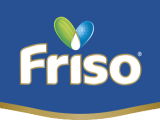
Must-knows About Dietary Fibre for Your Child
What is dietary fibre?
Dietary fibre is the indigestible portion of plant foods. There are two main types of fibre, which are known as soluble fibre and insoluble fibre. Insoluble fibre can expand in our guts, regulate bowel movements and prevent constipation, maintaining a healthy colon. It also adds bulk to our diet, making you feel full faster. This may reduce appetite, which is helpful for those who are trying to lose weight. What kind of food should we eat to get insoluble fibre? Here are some examples: whole-wheat and whole-grain food products, whole-wheat bread, seeds, nuts, fruits and vegetables. On the other hand, soluble fibre helps to reduce blood cholesterol level, regulate blood sugar level, thus decreasing the risk for heart diseases and improving diabetes. To get soluble fibre, we should eat more fruits, vegetables, soy beans and oats.
Because each type of fibre has its unique and important benefits for health, nutritionists recommend that we take both types of fibre as appropriate. The simplest way to do that is to include fibre-rich foods in our daily diet.
How much fibre does my child need?
In the United States and Canada, nutritionists suggest that adults take about 15 grams of fibre per day. This is lower than the recommended 25 - 35 grams per day. However, note that children's fibre intake should be accordingly adjusted, usually less than half of adults' intake. Experts also emphasise that children should take fibre in a gradual process to avoid an overdose, because too much fibre can lead to negative effects too. For example:
- Before your child gets enough food and nutrition, he already feels full due to the bulk of fibre.
- Hindering the body's absorption of calcium, zinc, iron, and other minerals. This will be problematic for children whose diet already contains a limited amount of minerals.
Attention, mums! Here are some reminders about your child's fibre intake:
- Avoid fibre-rich breakfast cereals such as wheat bran.
- White bread is a good choice at this age, and you can give your child whole-wheat bread after he is a year old.
- Feed your child fruits and vegetables that are suitable for his age.
- Add some cooked and mashed soybeans into his diet.
- Encourage your child to take more fluids, such as water, milk, soup, and diluted fruit juice.
An example of choice of fluids you can provide for your child is the Friso Gold Growing Up Milk, which has a balance of essential nutrients and vitamins, at the same time with prebiotic fibre to maintain your child's healthy gut, preventing constipation and diarrhoea.
